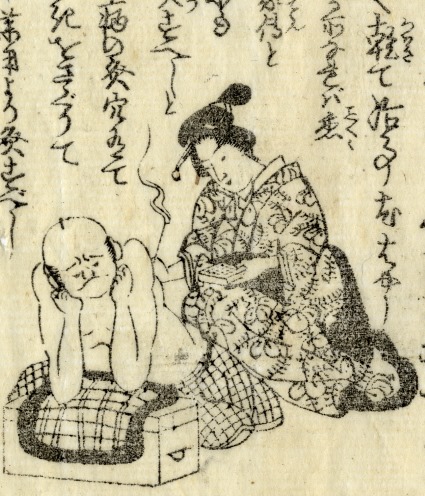
Illustration of the practice of moxibustion, from the Japanese manuscript, Banshō Myōhōshū (万象妙法集, 1853)
What is moxibustion?
Moxibustion is the burning of an herb on or near the skin. The herb is called mugwort (folium artemisiae) and, when used for moxibustion, it is called moxa.
What are the benefits of moxibustion?
Moxibustion warms your body deep beneath the skin. When combined with acupuncture, it benefits the function of your internal organs. It alleviates pain, relaxes muscle spasms, boosts energy, and can calm anxiety.
Can I get burned during moxibustion?
If it is performed on the skin, then a protective cream is applied to prevent you from getting burned. It is performed under a controlled environment so that there is very little risk of skin irritation.
Background
While moxibustion is rooted in Shamanism, science gives us an understanding of its physiological mechanisms. Its heat stimulates thermoreceptors on the skin to affect the nervous system. Warm-receptors of the peripheral nervous system transmit information along the same unmyelinated C fibers that convey pain signals. This may explain why moxibustion helps moderate pain.
Moxa heat also emanates within the infrared spectrum to penetrate deeper into the tissue to stimulate blood circulation.
Traditionally, it is performed by burning loose mugwort. However, the smoke that is produced can irritate the membranes of the eyes, nose and throat. In modern practice, “smokeless” moxa may be used. This is achieved by compressing loose moxa into charcoal that smolders, barely producing smoke.
While charcoal moxa eliminates any smoke concerns, it does produce a mild chemical odor.
To capitalize on the scientific understanding of moxubustion, Balingit Acupuncture often employs an infrared lamp in place of both loose and charcoal moxa.
